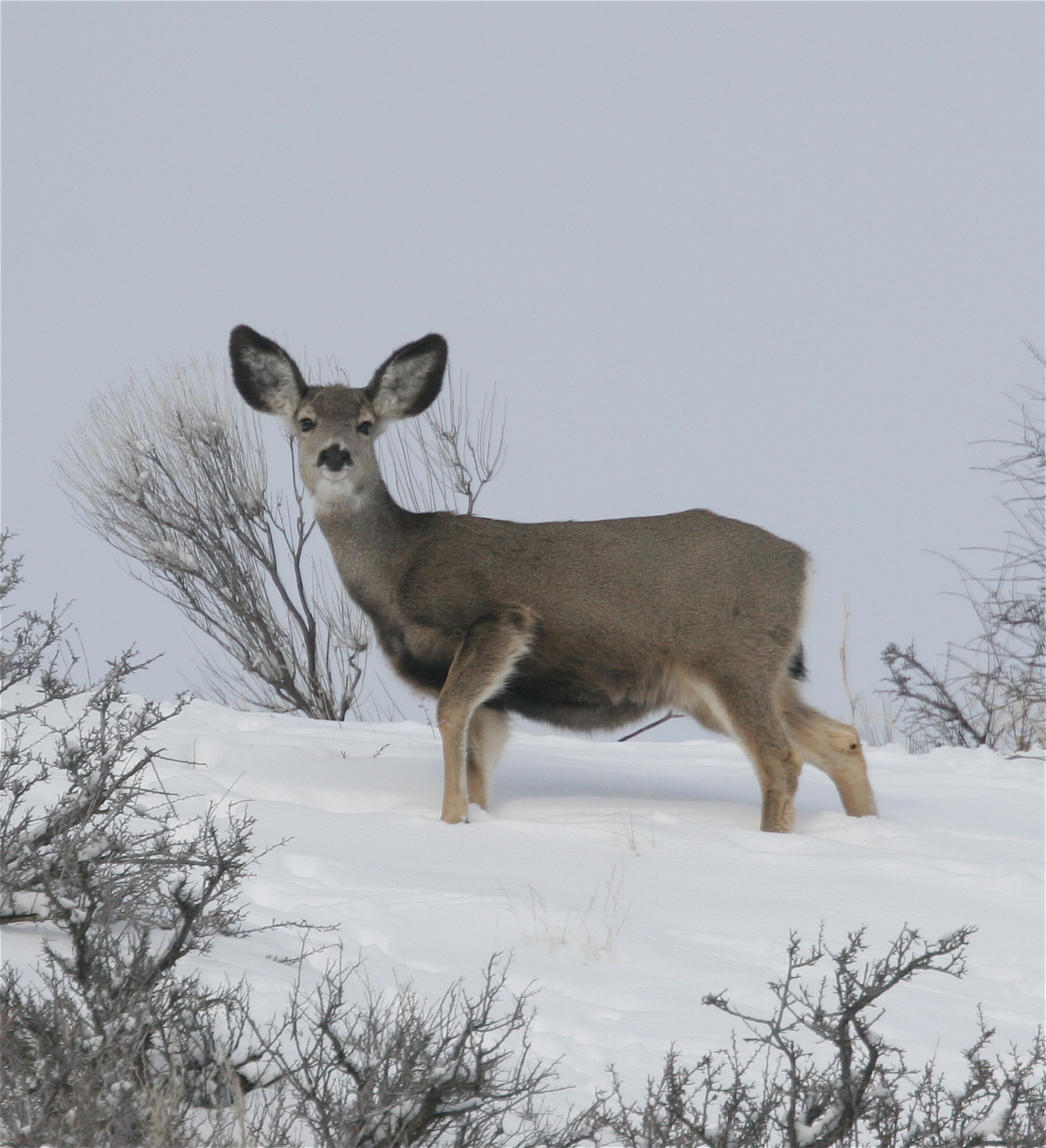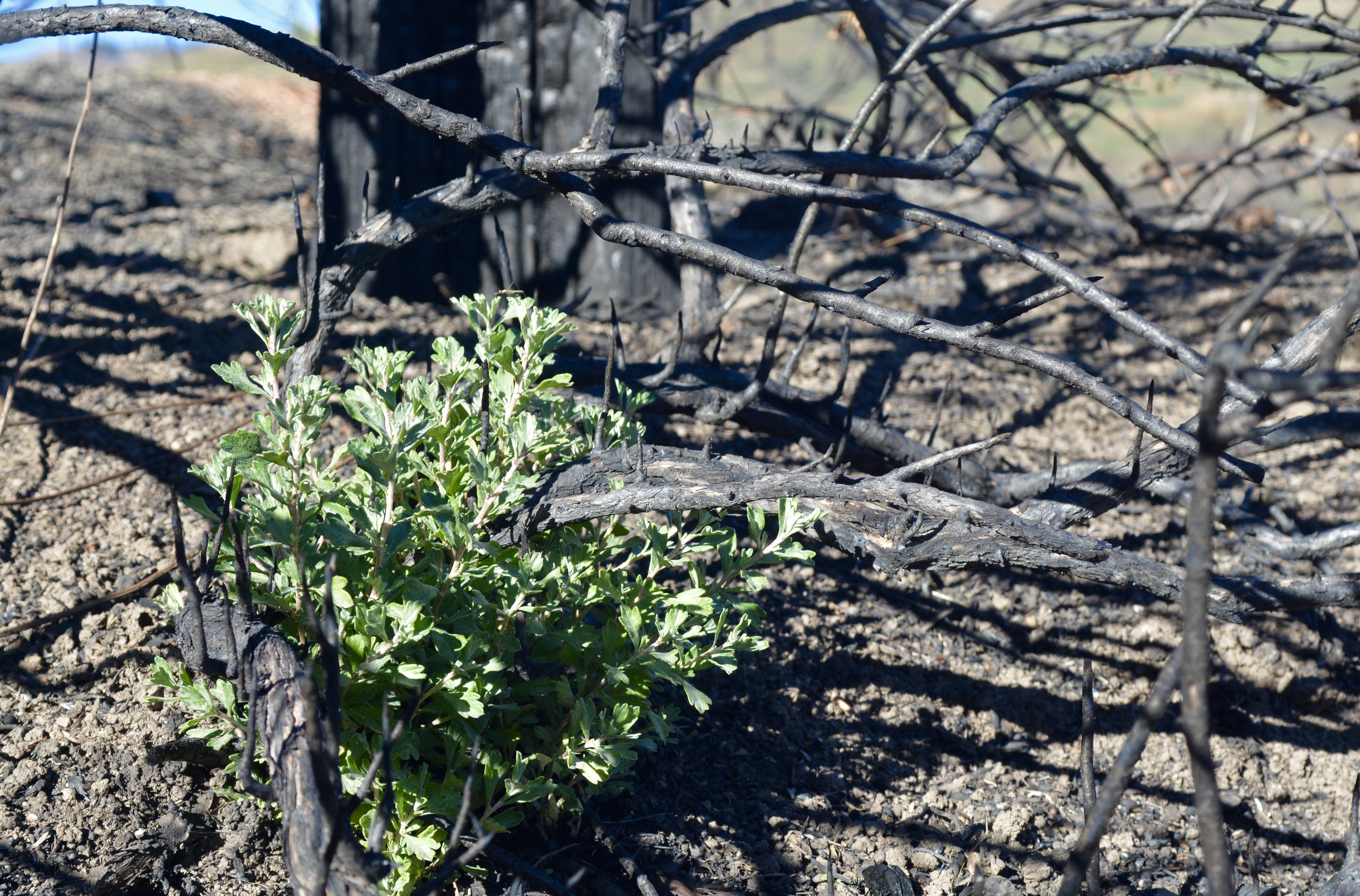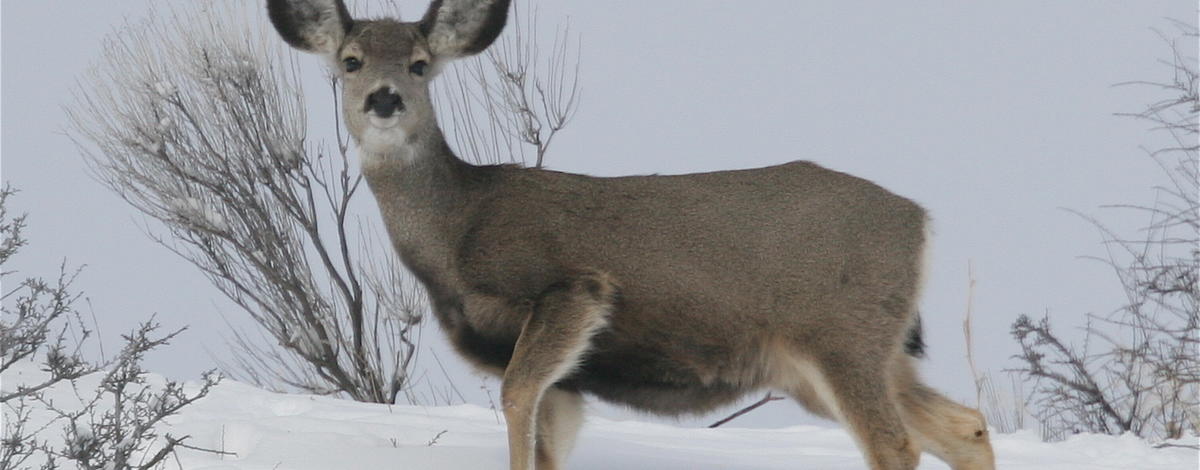
Would you skip hiking or walking your dog in Boise Foothills this winter if it meant saving a deer that might otherwise succumb to starvation? That’s not a rhetorical this winter as thousands of deer and elk return to the Boise River Wildlife Management Area and find fire consumed 4,300 acres that provided critical winter habitat.
Wildfires last summer present a tricky situation for Idaho Fish and Game, which manages the 47,000-acre WMA near Lucky Peak Reservoir.
The WMA makes it possible for one of the state’s largest mule deer herds to thrive near Idaho’s largest population center. Depending on the year, 5,000 to 8,000 mule deer and up to 1,800 elk use the WMA to escape snow as they migrate from as far away as the Sawtooth mountains. Although they spend a small portion of their year on the WMA, it can be a life saver.
“These animals have a certain amount of body fat when they come onto the WMA. That’s all they have to live on during winter,” said F&G’s wildlife Management area manager Krista Biorn.
“Even if the winter is mild, they can still have a hard time.”
Part of the challenge from last summer’s wildfires is that Biorn doesn’t know what kind of winter lies ahead. Deep snow can cover the limited food that remains, and sub-zero temperatures can force animals to burn fat reserves to stay warm, which can leave them depleted and malnourished before spring arrives.
That’s why it’s important for people to give animals wintering in the Foothills a break and leave them alone, even if it means getting in the car and driving someplace else for a hike, mountain bike ride, or to walk the dog; especially walk the dog, because deer and elk see them as predators and may run from them on sight.
Not that the situation is completely hopeless. Despite the fires, there’s still some forage and cover available on the WMA, and Fish and Game crews and volunteers are working to restore burned areas. Fish and Game also stockpiles feed pellets in case emergency feeding is needed, but that’s not a simple solution.

Nature vs. nurture
Winter typically thins deer herds and ensures the fittest animals survive and pass their genes on to the next generation. The first animals to perish during a hard winter are the youngest ones, followed by the oldest, and even during mild winters, some simply don’t make it. That can be sad on an emotional level, but it’s nature’s way of ensuring the herd consists of the hardiest animals.
Fish and Game takes a similar approach in managing those herds. Wildlife managers want the landscape to naturally support the animals that live there and not artificially inflate big-game populations by regularly feeding animals during winter and building a population that’s beyond the carrying capacity of the land.
But fires can mean short-term setbacks in the carrying capacity, and possibly longer periods if prime wildlife habitat gets replaced invasive plants that provide little or no food for animals. Extremely harsh winters can also threaten a large segment of the deer population, which is why there’s the option of winter feeding. But the baseline policy is to ensure the habitat can support the populations.
Wildlife vs recreation
Good winter range for big game has abundant shrubs and grasses, areas where deep snow doesn’t accumulate, and a low level of disturbance so animals can rest and preserve limited fat reserves that carry them through winter and into spring. Disturbances from humans, pets and other things can keep animals moving and burning precious reserves, or push them off the WMA.
Also, deer and elk moving to adjacent agriculture lands, into subdivisions and onto busy highways creates a variety of problems, so although most times of year, wildlife and recreation are compatible, Fish and Game officials have to consider wildlife first during winter.
Fish and Game does not close the WMA to the public during winter, but it closes access roads to motorized vehicles and requires dogs to be leashed unless in the act of hunting (there’s limited upland bird hunting opportunities on portions of the WMA, and one controlled archery deer hunt that lasts through Dec. 16).
But WMA managers ask the public to consider their actions in regard to the welfare of wintering wildlife. If people have the option of recreating where it won’t disturb wildlife, that increases the chances of a young deer or elk surviving its first winter.
In the meantime, Fish and Game is not crossing its fingers and hoping for a break from Old Man Winter.
Restoring burned habitat
Fish and Game personnel, along with a dedicated crew of volunteers, are working to revive habitat burned by the fires. Earlier this fall, crews planted 6,200 bitterbrush and sagebrush seedlings, and 75 large containers of willows.
They’ve also returned to water those young plants to help them get over the critical early stages of their growth, and in early December, they will be collecting sagebrush seed for later replanting.

Some plants, such as bitterbrush, can resprout from roots after fire and provide forage in a few years, but sagebrush has to regrow from seed unless portions of it survive.
Fish and Game is also working with the U.S. Forest Service to restore vegetation on the upper slopes of the WMA to further help deer and elk as the snow melts and they begin their transition to summer range.
“Our WMAs are to benefit wildlife, and if something affects that, we’re going to spend money to fix it,” Biorn said. “I think we can get these landscapes back quicker than if we just leave them alone.”

